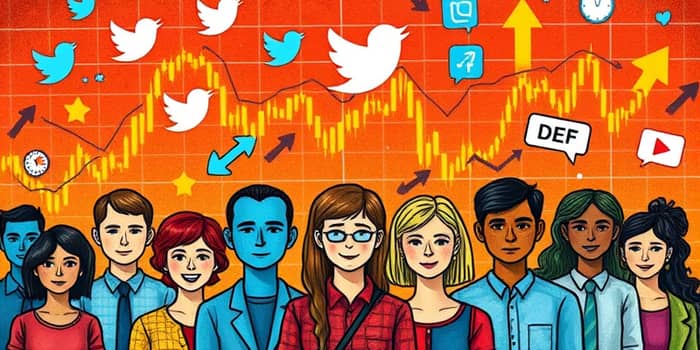
In today’s hyperconnected world, financial markets no longer move solely on the back of printed headlines or official earnings releases. A single 280-character post can spark buying frenzies, fuel overnight rallies, or trigger abrupt sell-offs. As investors and analysts scramble to decode this new landscape, understanding the profound role of social media has become more critical than ever.
The shift from traditional gatekeepers to instant, user-driven channels has transformed how information travels. No longer confined to trading floors or subscription newsletters, market insights are now shared in real time, accessible to anyone with an internet connection. This democratization presents both unprecedented opportunities and novel risks, reshaping the very foundation of market movement.
Social media platforms have revolutionized access to financial news. Where once investors waited for after-market reports, they now can tap into real-time market insights on Twitter, Reddit, Facebook, and specialized forums. Retail traders monitor threads for breaking rumors, institutional desks scan sentiment analysis tools, and journalists track trending hashtags for story leads.
This instantaneous flow of data empowers individuals to act on news faster than ever before. For example, reports of a management shake-up at a major corporation can spread across Twitter in seconds, prompting rapid adjustments in buy-sell orders. Similarly, community-sourced analysis on Reddit often uncovers overlooked financial statements or hidden catalysts days before mainstream outlets publish detailed coverage.
Few phenomena illustrate social media’s market sway more dramatically than the rise of r/wallstreetbets. What began as a niche forum evolved into a global movement that upended conventional wisdom about valuation and risk. In early 2021, coordinated action among retail investors drove GameStop shares from under $20 to nearly $500, defying analysts and triggering billions in short-squeeze losses.
This episode highlighted a statistically significant correlation between post volume and price change, as detailed in multiple academic studies. Researchers noted that higher post counts often preceded sharp stock movements, underscoring the predictive power of concentrated social engagement.
The table above illustrates how social signals now rival traditional media in their ability to influence trading behavior. In some emerging markets, like Brazil, social media’s impact on returns has even matched or surpassed that of mainstream news outlets.
When a high-profile figure with millions of followers weighs in, the market listens. Elon Musk’s tweets about Dogecoin and Bitcoin repeatedly provoked double-digit percentage swings within hours. This phenomenon underscores how celebrity commentary can amplify volatility, particularly in assets with high retail participation and lower liquidity.
Cryptocurrencies, with their decentralized nature, are especially susceptible to sentiment shocks. A single emoji or casual endorsement can trigger a surge of orders, illustrating the power of influencer-driven momentum. For investors, this means monitoring social channels is no longer optional—it is a vital component of risk management and opportunity spotting.
While social media offers a rich tapestry of data, it also poses significant challenges. Disinformation campaigns and coordinated “pump-and-dump” schemes exploit herd behavior to manipulate prices. Rumors can spiral into panics, leaving unprepared traders nursing heavy losses when the bubble bursts.
Regulatory bodies worldwide have taken notice. The SEC and ESMA are developing frameworks to identify coordinated online trading and curb the spread of misleading financial content. For market participants, the key is to blend traditional analysis with social sentiment metrics, ensuring that decisions rest on solid fundamentals supported by real-time community insights.
To navigate this dynamic environment, investors must adopt new practices that harness the advantages of social media while mitigating its pitfalls:
By weaving together community-sourced data and rigorous financial analysis, investors can transform social media from a source of noise into a powerful asset. The narrative of markets is now co-written by millions of voices—retail traders, influencers, journalists, and institutions—all converging in digital space.
As we move forward, the interplay between social media and market movement will only deepen. Platforms will refine algorithms to flag false information, while traders will refine strategies to extract signal from noise. The future of investing belongs to those who recognize that in a networked world, every post can be a market mover. Embracing this reality will be crucial for anyone seeking to thrive in the evolving financial ecosystem.
References













